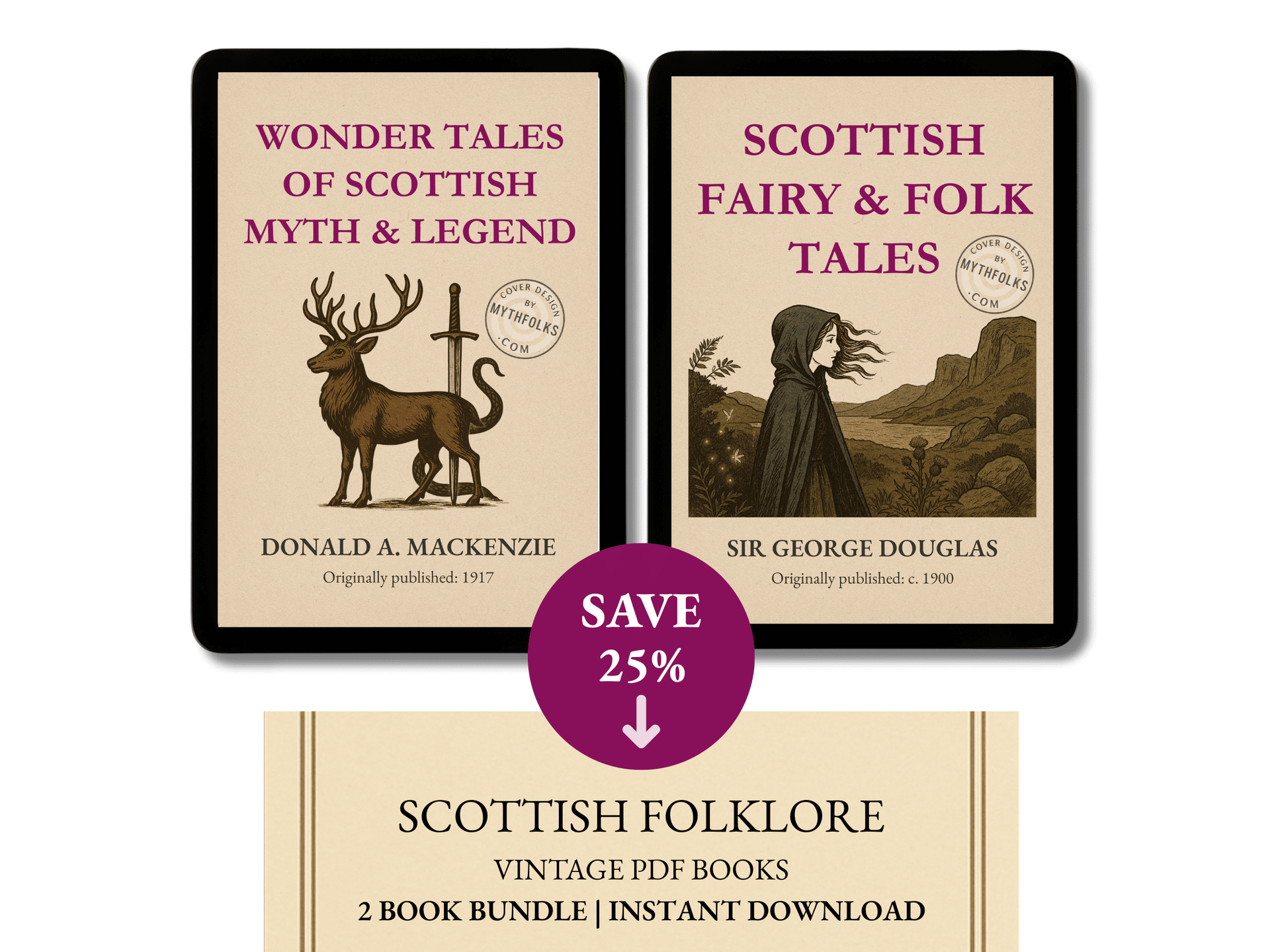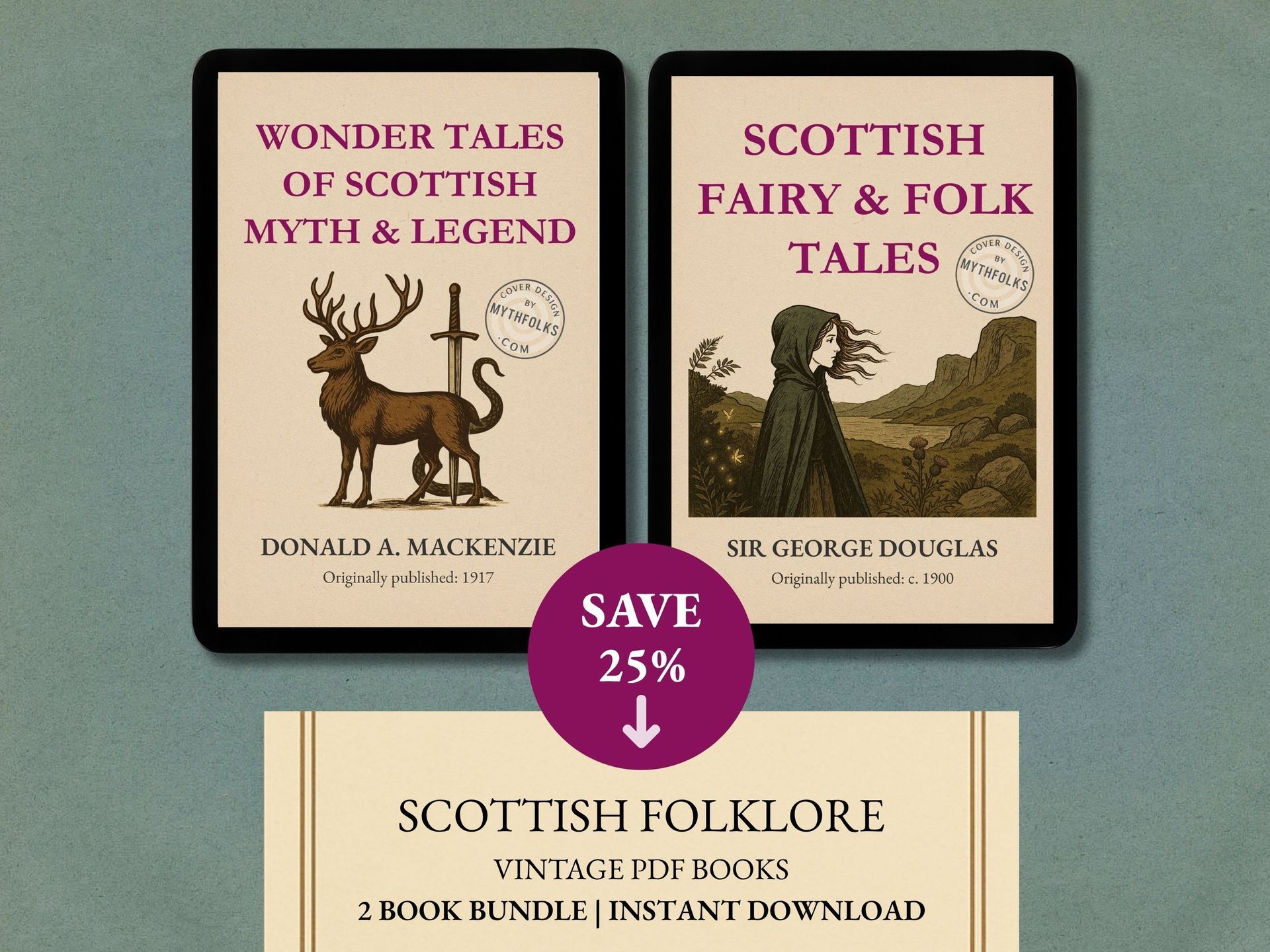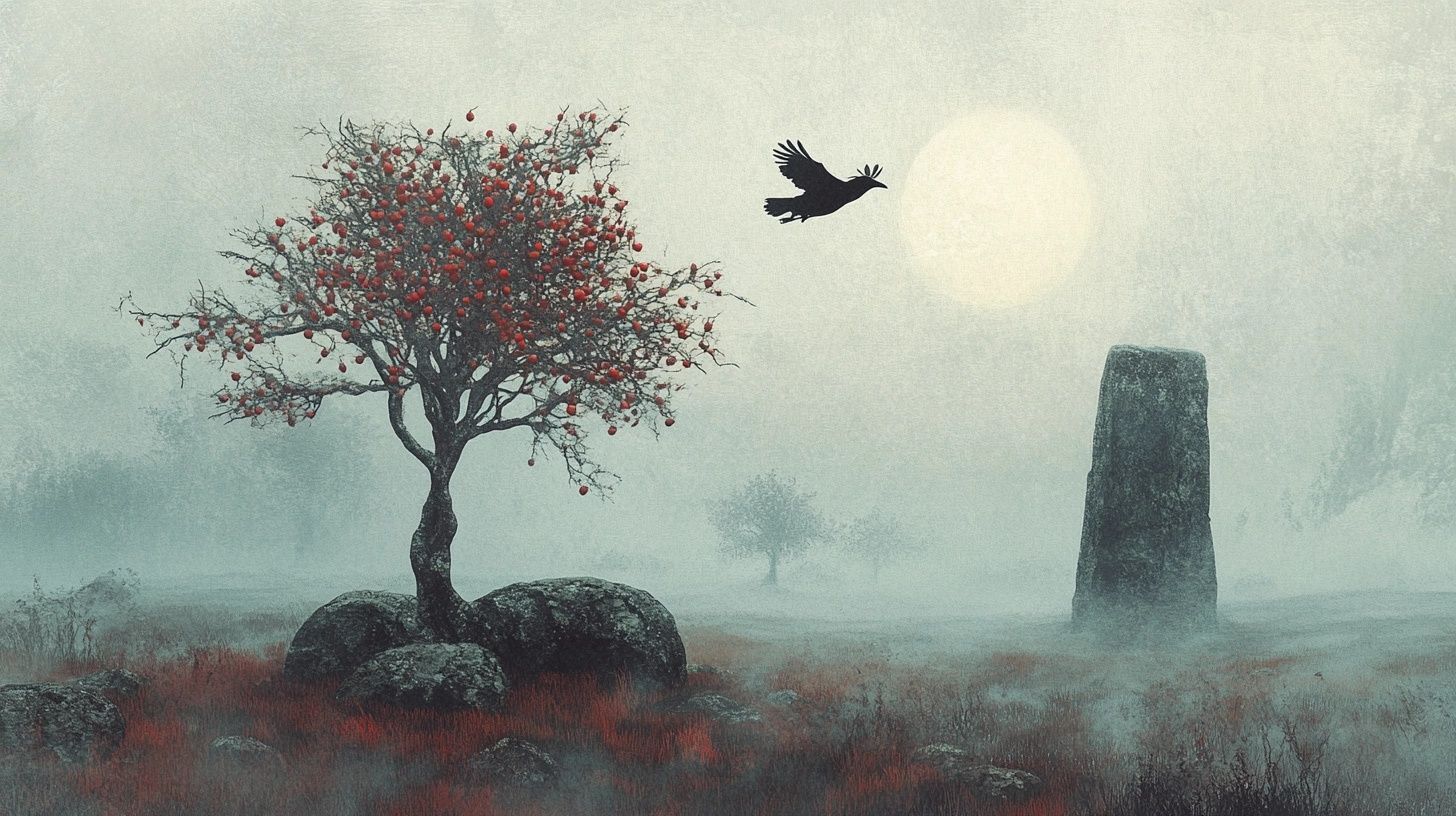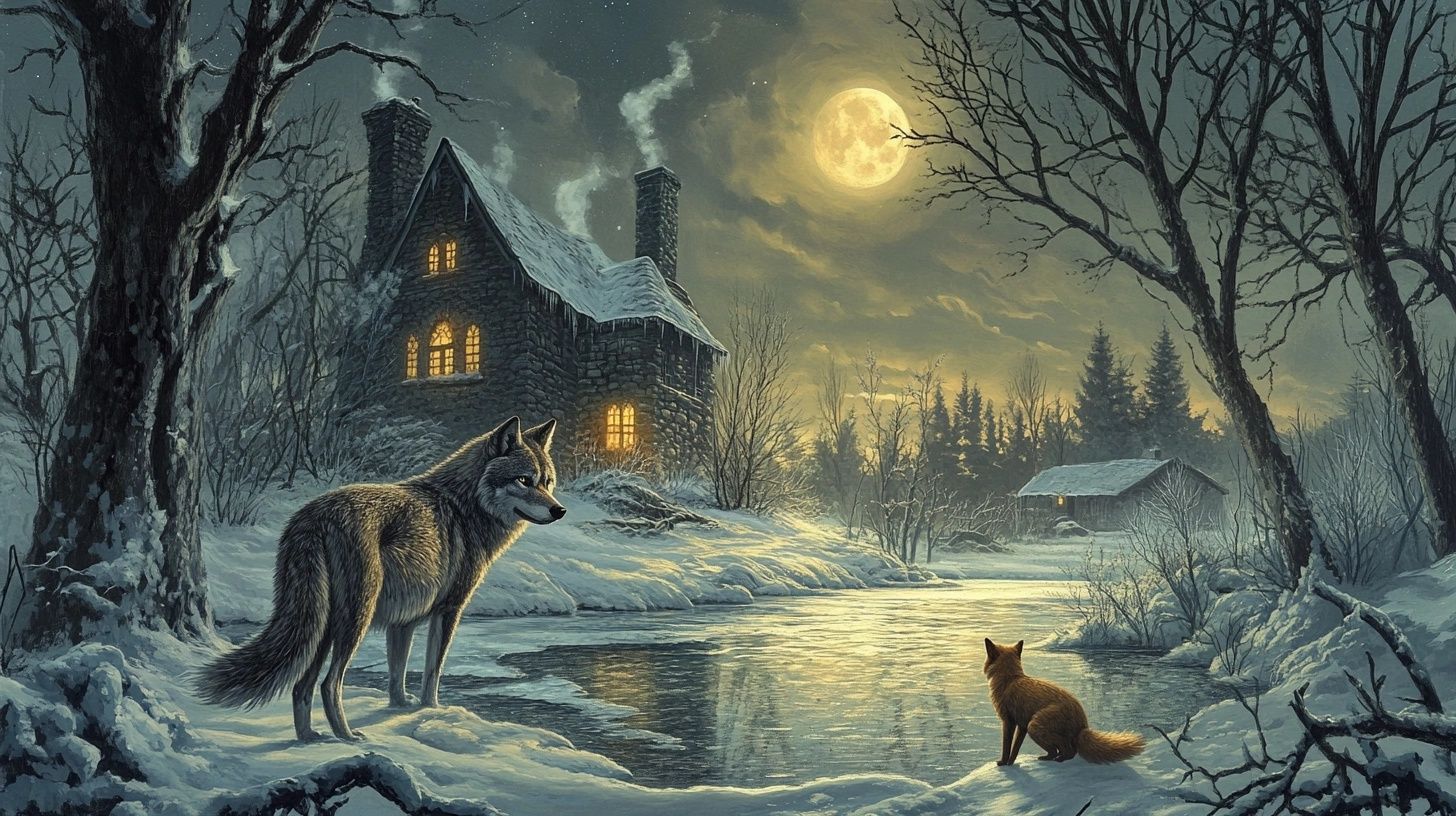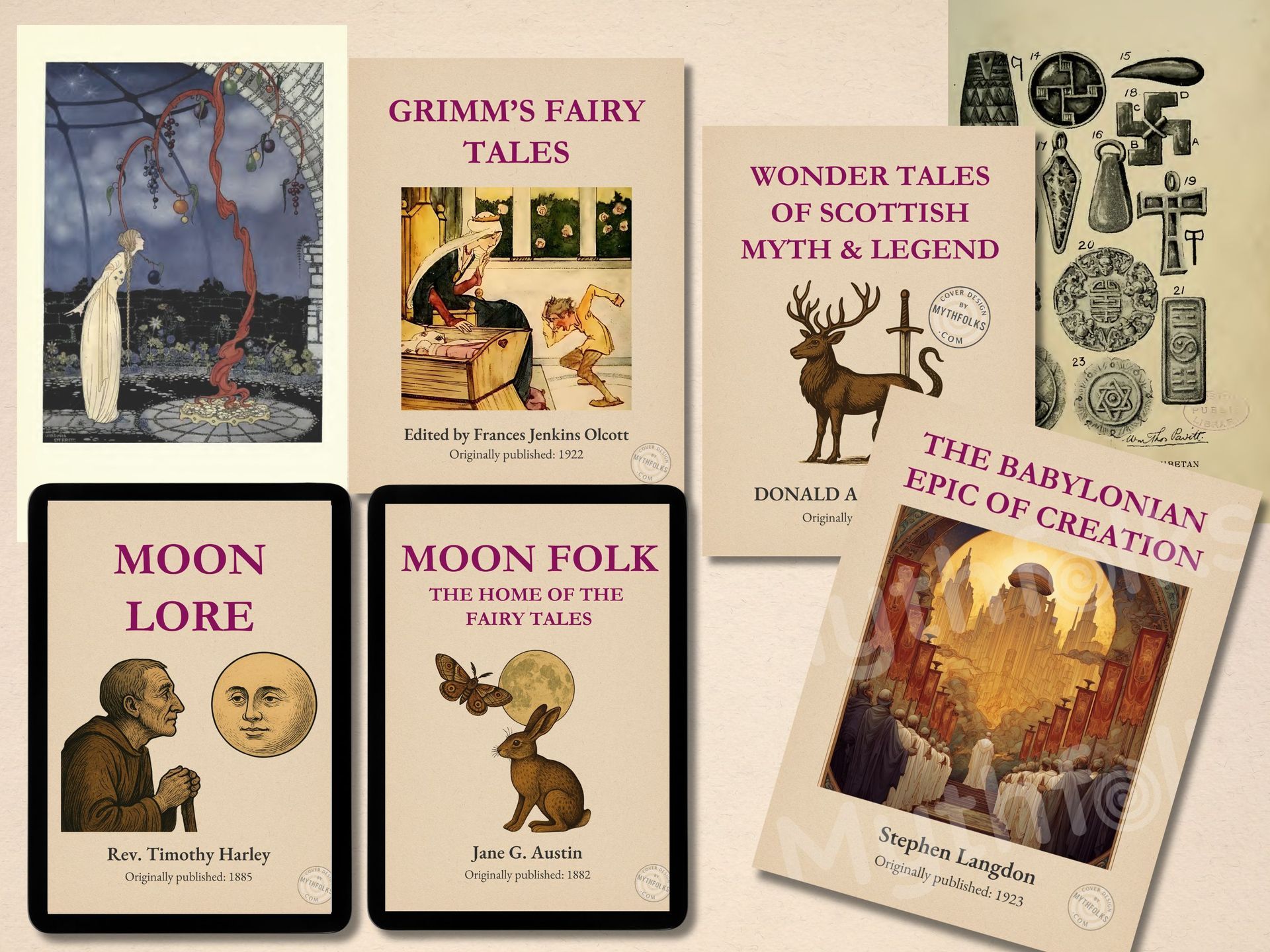The Glaistig & Gruagach: domestic guardian spirits of Celtic folklore
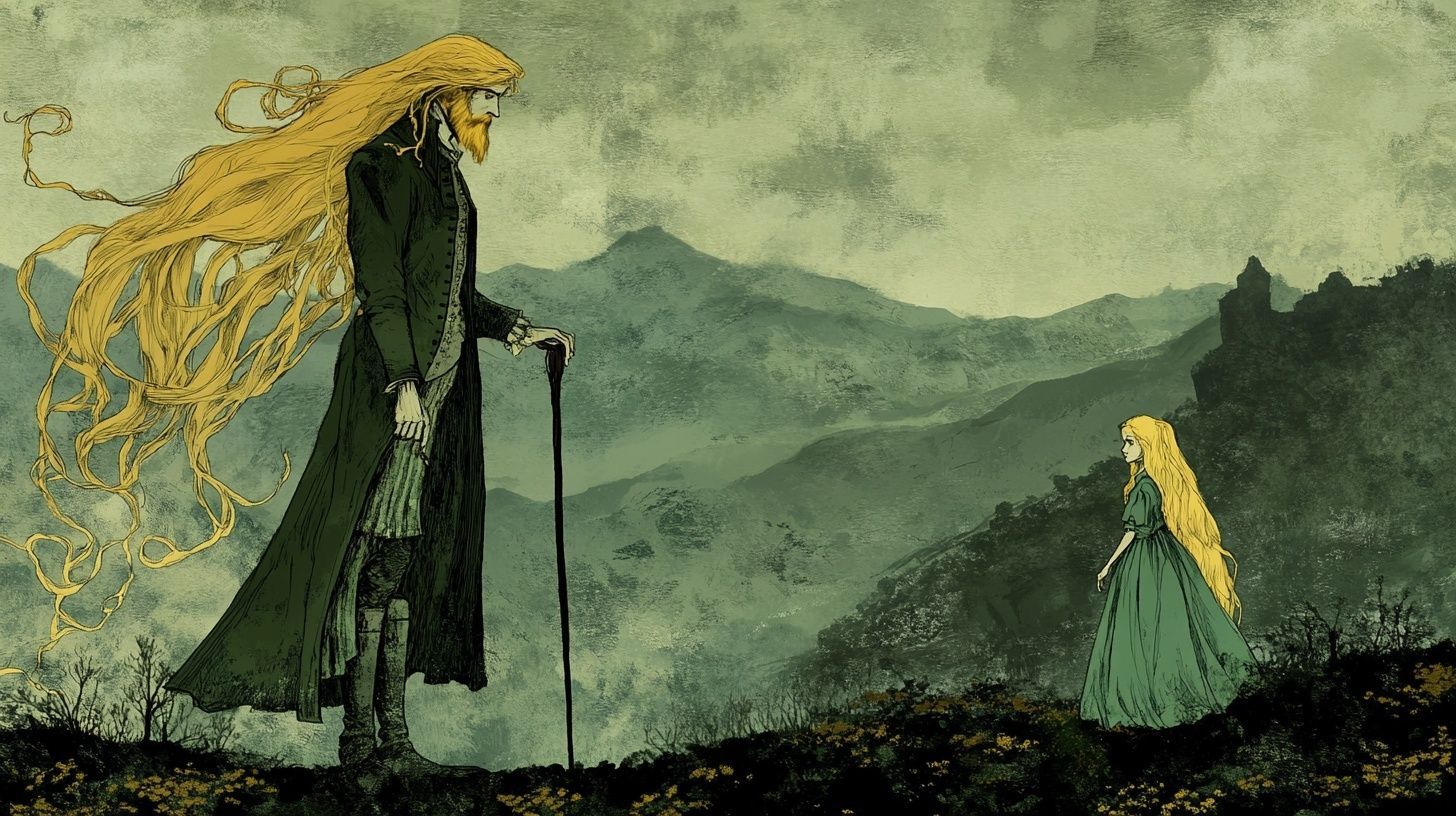
In Scottish folklore (and other Celtic origin folklore but mostly Scottish), the Glaistig and the Gruagach are two sides of the same coin - domestic spirits that are tied to a specific place and offer both help and hindrance in day-to-day life.
The main difference comes in appearance and origin with different tales prominent in different parts of the Scottish highlands and lowlands. They both definitely have very long blonde hair though!
The Glaistig is the primary supernatural creature that features in old folk stories - read on to learn more about her and then how the Gruagach differs.
Published: 9th Nov 2025
Author: Sian H.
The Glaistig's origin & appearance
According to folklore, the Glaistig was originally a high-status human woman, probably the mistress of a house, farm or castle, who was one day put under an enchantment that gave her a "fairy nature” - so she didn’t become a fairy but a sort of hybrid human/fairy spirit.
Note: In the context of this article, when I refer to “fairy” or “fairies” I am referring to the original fae/faeries of Celtic mythology and not the modern fantasy versions (this is true of all Mythfolks articles involving fairies!).
The Glaistig was a solitary creature and only one could ever haunt a single location - unless she was accompanied by her child who had also been enchanted by the fairies (her offspring was known by several names, including Méilleachan (thought to be derived from its bleating sound), Isein (a chicken) or Gocan (a little plug)).
The name "Glaistig" is thought to come from the Gaelic word glas (meaning grey, wan or pale-green) and her most common description is that of a "thin grey little woman" with very long yellow hair that reached her heels.
She was often dressed in green, the characteristic colour of the fairies, which also earned her the name Glaistig uaine (or 'Green Glaistig').
However, this description wasn't universal. In the Southern Scottish Highlands, she was sometimes described as short and stout while in Skye, she was said to be a tall, thin figure, almost like a "white reflection or shade.”
And, despite her frame and size, whether thin or stout, she was said to possess
enormous physical strength, far greater than that of any fairy and a
very loud wail that could awaken the dead.


Key character traits of the Glaistig
The joy of folklore is that these stories often come with highly specific details about these creatures and the Glaistig’s distinct personality could be defined by two key traits.
First, she had a strong dislike for dogs.
Second, she had a particular commitment to providing personal protection to people with low intellects and she would punish anyone who looked down on or mistreated those people, often by putting dust or soot in their food.
The Glaistig as an omen
For residences that had a Glaistig attached, her cries and activities were closely watched as they were considered a powerful omen of the future.
A loud wailing was a sure sign that a death was coming, while sounds of rejoicing meant a marriage or other happy event was on its way.
Her activity in locked rooms, such as the sound of furniture being arranged, was also taken as a sign that strangers would soon arrive.
The two roles of the Glaistig
The Glaistig is often described as one of two types: a spirit who haunted the house or a spirit who guarded the cattle.
The house-haunting Glaistig
When the Glaistig haunted a house, she was also known by names like Maighdean sheòmbair (chamber-maid). Her loyalty wasn’t to the family living there but to the physical site or building (the làrach).
She would remain attached to the location even if the tenants changed or the house itself fell into ruin. The only thing that would make her leave was the building being torn down - or a gift considered an insult (keep reading below to find out what!). Either of these meant she would finally depart - but most unhappily.
At night, the household might hear her at work sweeping floors, arranging furniture and sometimes finishing chores like washing that had been left out.
She also had a mischievous side, with a fondness for meddling with spinning wheels and tradesmen's tools. She would play pranks on lazy or disrespectful servants, knocking over their water-jugs or giving them a memorable slap on the side of the head in the dark.


The cattle-guarding Glaistig
In this role, she acted as a supernatural herdsman. She would watch over the cows, sheep and horses, and though unseen, she could be heard shouting at the animals to keep them out of trouble.
She was also a strict superintendent of the dairy. She would punish dairy-maids who didn't milk the cows cleanly and was known to keep the calves separate from their mothers at night (a useful job before modern enclosures, as this ensured the calves wouldn't drink all the milk before the morning milking).
In return for this service, she demanded payment: a portion of milk had to be poured out for her every evening into a special, holed stone near the animal pen.
If this offering was forgotten, she would cause chaos. A cow might be found dead, the cream would fail to rise from the milk or the calves would be found let loose among the cows.
Enjoying this article? Check out my vintage Scottish folklore ebook bundle and
save 25%!
(Clicking the link will open the Mythfolks Etsy shop in a new tab.)
How the Glaistig compares to other spirits
The Glaistig was distinct from other supernatural beings, sharing some traits while differing in major ways
Versus Brownies:
She shared some similarities with the domestic Scottish Brownie spirit, especially in terms of attitude and a propensity to get on with household chores.
There is one other crucial trait that they also shared - both spirits would be deeply offended by a gift of clothing or shoes! If such a gift was left out, the Glaistig would take it as an insult and leave the farm forever.
Versus Fairies:
The Glaistig was considered far more "human" than the true fairies (Bean Shìth) - not surprising as she was originally corporeal.
She was seen as more substantial and performed practical, day-to-day human tasks, like housekeeping or dairy work. She didn’t take part in otherworldly feasts, dances or recreations that were traditionally associated with the fae.
This difference was clearest in the way they granted favours. Fairies might grant a general talent for making things to their favourites. The Glaistig's favor was more specific and came in the form of a strange, binding contract.
She would offer a person a choice between two distinct, mutually exclusive options:
Ealdhain gun rath, which meant ingenuity without advantage. The person would become a brilliant, clever workman or artisan, but they were fated to never prosper or make a fortune from their skill.
Rath gun ealdhain, which meant advantage without ingenuity. The person would become wealthy and successful, but they would be a "stupid fellow," lacking all cleverness and ingenuity.


The Gruagach origins & appearance
In Scottish folklore the Gruagach is another enchanted human/fairy spirt that was in many ways just a slightly different version of the Glaistig - an example of how the same stories can evolve differently even within close geographical spaces.
In common Gaelic, "Gruagach" was a name for a maiden and In many regions, like Argyllshire, the name was used for the exact same female Glaistig spirit.
However, in older, formal tales - like those from 12th-century Ireland relating to the times of Murchard Mac Brian, who was king of Ireland c. A.D. 1100 - “Gruagach" was originally a title of respect for a high-status male chief or person of consequence.
This title also referred to their long hair, which was worn as a sign of rank (the word "Gruagach" (pronounced groo-ah-gakh) means "the long-haired one”).
One poem from this time, for example, has a noblewoman explicitly refer to her husband, the father of her children, as the "Gruagach of the Isle of Birds.”.
In the later folklore, especially in parts of Skye, the name Gruagach evolved into a distinctly male spirit guardian interchangeable in many ways with stories of the Glaistig.
In this folklore version he was described as a tall, young gentleman with long yellow hair, dressed in a long coat, knee breeches and a frilled shirt and often carrying a cane and wearing a beaver hat - a description representative of his historic and high-standing origins.
Duties & pranks of the Gruagach
This male Gruagach performed the exact same job as the cattle-Glaistig. He was a guardian of the herds and he also required a nightly portion of milk to be poured into a special hollow stone (the Clach na Gruagaich) with similar punishments to follow if it was forgotten.
He did have his own slighlty unique brand of mischief though. He was famous for untying all the cattle in the cowshed at night, just to amuse himself by making the farmers get out of bed to tie them up again.
When he did this, the cattle would remain perfectly calm and not harm each other and the farmers would hear the Gruagach laughing and tittering somewhere in the vicinity.
Like the Glaistig, he was usually harmless but could be deadly if provoked.
In one darker story, a woman was leading calves to their enclosure at Tota Roam in Scorrybreck and a Gruagach decided to amuse himself by not letting them enter the pen.
Understandably angry, the woman cursed the Gruagach - so he slapped her on the cheek and she died (an example of the extraordinary strength that they had).
In a sort of show of remorse maybe or just an example of the generally non-malicious nature of these spirits, he then helped to keep the fire going for the woman who sat up watching the body (waiting for morning so help could come).

Scottish lore is full of fascinating spirits like these, although these two are quite unique given their very human origins.
Check out more ghosts & spirits from global folklore here or explore domestic fae spirits from Celtic mythology here.
Article sources
- Campbell, John Gregorson. Superstitions of the Highlands & Islands of Scotland: Collected Entirely from Oral Sources. Glasgow: James MacLehose and Sons, 1900.
Shop vintage, digital Scottish folklore books
I spend a lot of time digging through old and out-of-print folklore texts and curate selected titles as digital editions.
I used these 2, early 20th century Scottish folklore books as part of my research for my series of articles and have re-packaged them in my Etsy shop for purchase.
Inside you'll be treated to myths of gods and nature, heroic quests, fairy tales, animal fables, supernatural beings and a whole lot more original folklore from the highlands and lowlands of Scotland.
Both books can be purchased separately but you can also save 25% with my mini bundle!
(Clicking the link will open the Mythfolks Etsy shop in a new tab.)
You might also like


